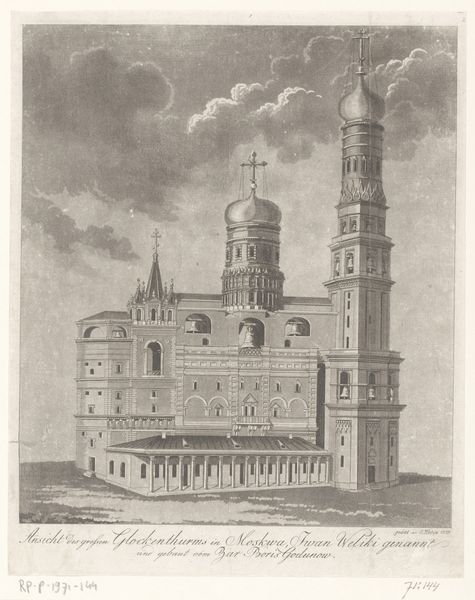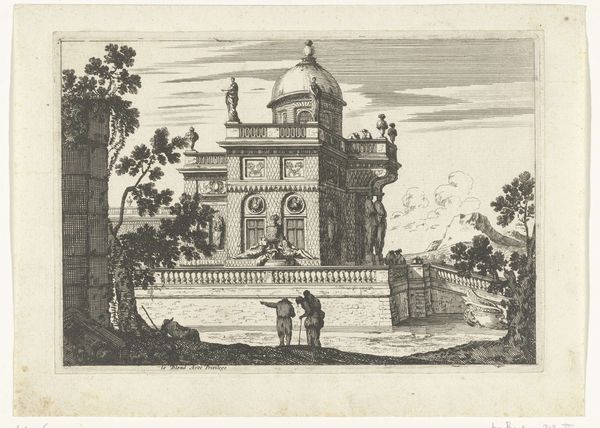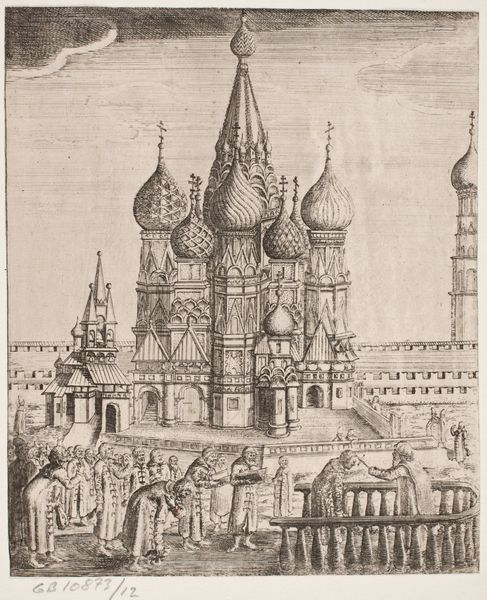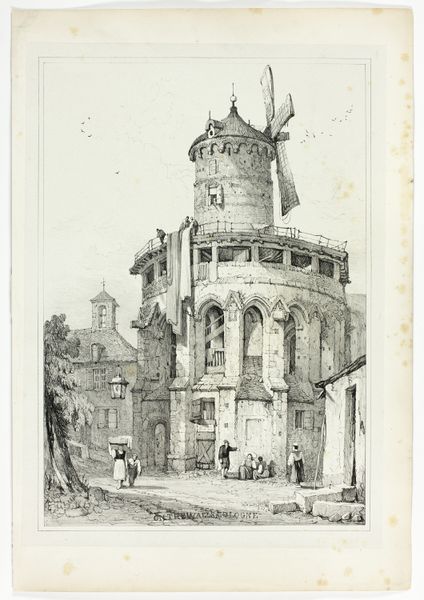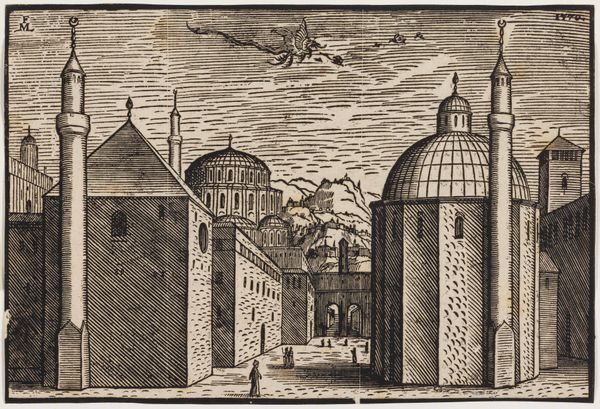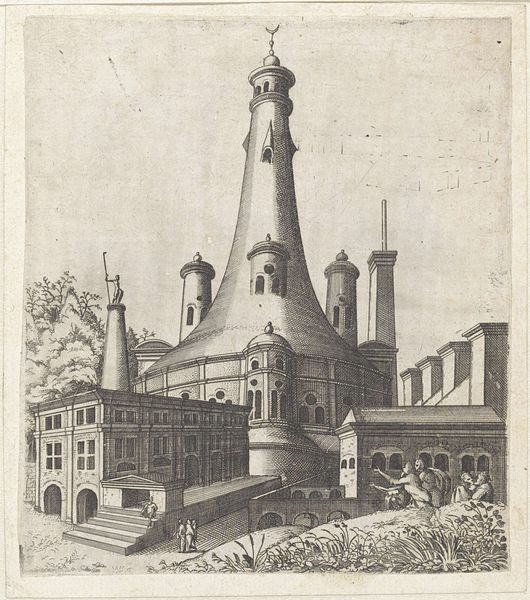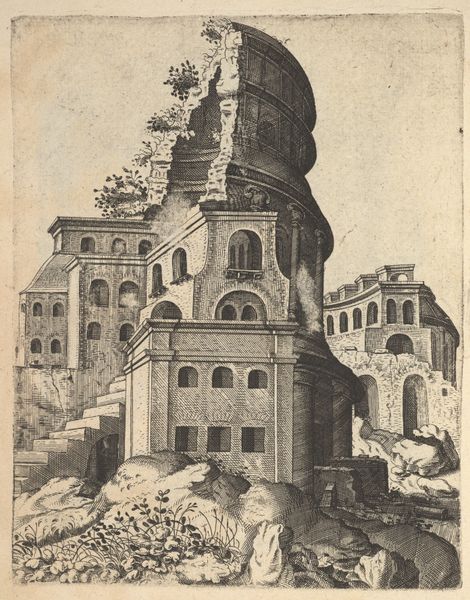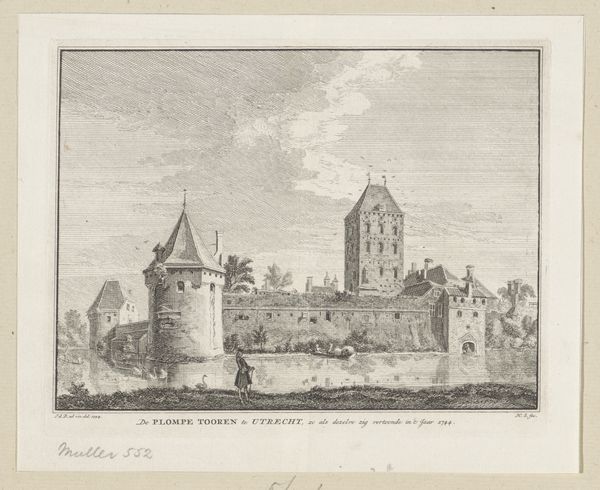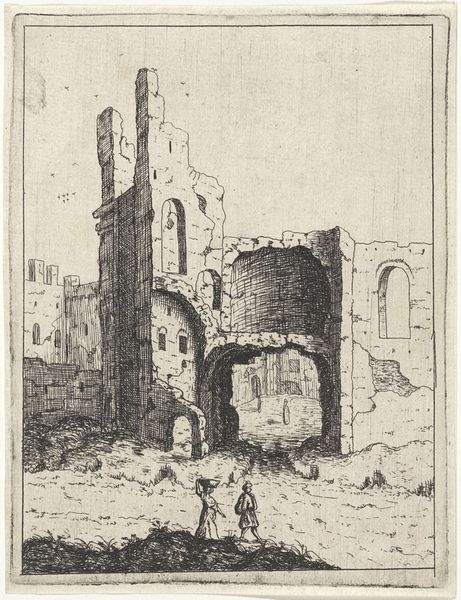
Dimensions: 129 mm (height) x 95 mm (width) (bladmaal)
Editor: Here we have "Russisk kirke," or "Russian Church," an engraving from 1647 by an anonymous artist. The intricate linework gives the building such a monumental presence. How should we interpret this piece? Curator: Looking at this engraving, I see more than just architectural documentation. Consider the context of 17th-century Russia. What social structures are supported by this magnificent church? The prominence of religious architecture speaks volumes about power dynamics at the time. Think about who commissioned the work, who benefitted from it, and what message it conveys to the wider populace. Does this idealized depiction reflect reality for all at that time, or does it serve as a symbol of exclusion? Editor: That's a perspective I hadn't considered. I was focused on the aesthetics and technique. What about the rising power of the Tsars? Does the church design serve to buttress their divine right? Curator: Precisely. The Baroque style often emphasizes grandeur to inspire awe. The architectural style itself becomes a tool, reflecting not just religious piety, but also political ideology. Look closer. Are there cues about trade relations in the composition of the work itself? Or the clothing of people portrayed nearby? Editor: Now I see how a simple architectural drawing opens up avenues to explore the power structures and societal norms of the era. I never thought I’d read so much in an image of a building! Curator: It highlights how art serves as a cultural artifact, reflecting complex sociopolitical conditions. Analyzing those nuances reveals whose stories are amplified, and, crucially, whose are suppressed or made invisible. Hopefully, this newfound perspective inspires continued investigation into hidden narratives!
Comments
No comments
Be the first to comment and join the conversation on the ultimate creative platform.
